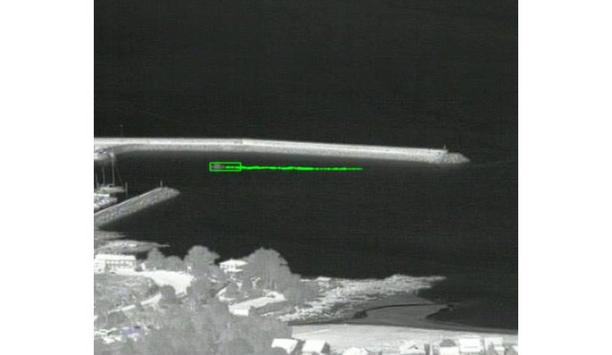Gradiant - Experts & Thought Leaders
Latest Gradiant news & announcements
Gradiant announced it has joined NVIDIA Metropolis, a partner programme focused on bringing to market a new generation of vision AI applications. NVIDIA Metropolis nurtures a rich ecosystem and offers powerful developer tools to supercharge vision AI applications that are designed to make the world’s most important spaces and operations safer and more efficient. Bird Detection solution Through its Bird Detection solution, Gradiant can provide real-time identification and classification of birds in open spaces such as onshore and offshore wind farms, airports, and other natural scenarios, contributing to increased safety for avian species in multiple environments. Gradiant will use NVIDIA technologies to help advance its AI-driven video analytics know-how for automated bird detection and classification. DeepStream SDK NVIDIA Metropolis makes it easier and more cost-effective for enterprises, governments, and integration partners The processing of the solution’s algorithms is done on the edge, using the NVIDIA Jetson edge AI platform. Gradiant also uses NVIDIA DeepStream SDK to improve the throughput of the video streaming pipeline and NVIDIA TensorRT to improve the performance of its ML algorithms. NVIDIA Metropolis makes it easier and more cost-effective for enterprises, governments, and integration partners to use powerful AI-enabled solutions that improve critical operational efficiency and help address safety problems. Enterprise-class approach The NVIDIA Metropolis ecosystem contains a large and growing breadth of members who are investing in the most advanced AI techniques and most efficient deployment platforms and using an enterprise-class approach to their solutions. Members can gain early access to NVIDIA platform updates to further enhance and accelerate their AI application development efforts. Further, the programme offers the opportunity for members to collaborate with industry-leading experts and other AI-driven organisations. AI application development Luis Perez Freire, Gradiant’s executive director, describes the collaboration with NVIDIA as "a new milestone that positions our organisation again on the international stage by adding value to the vision AI ecosystem.” He also describes it “as an opportunity for further improving and accelerating our developments in AI applications through access to the latest developments and solutions from NVIDIA.” Ultimately, this collaboration will help Gradiant position itself at the forefront of innovation in the AI sector and continue to advance its technology at a pivotal time for AI adoption.
Gradiant leads a project to develop a technology capable of verifying the identity of citizens in the online processes of public services in a secure, easy-to-use and private way. To do so, the alliance will work on the concept of Electronic Identity (eID), the way users can identify themselves through the network and will use Artificial Intelligence and Blockchain technologies to ensure the process. This is IMPULSE (Identity Management in PUbLic SErvices), an initiative with a budget of around four million euros and involving up to 16 entities from 9 different countries. Beyond its functionalities, IMPULSE seeks to be a tool to make easier the digitalisation of the European public sector. Digital processes are increasingly used by citizens. The current health crisis around the world has limited personal interactions, digitising all kinds of procedures. This brings a number of problems, not only for those unfamiliar with the complex identification systems on the internet, but also for those who are not comfortable providing personal data over the internet. Association for ethical and legal requirements 16 partners that make up this consortium will create a tool to meet all the requirements so it can be useful for public services The 16 partners that make up this consortium will create a tool to meet all the ethical and legal requirements so it can be useful for public services in all the countries of the European Union, regardless of the culture and degree of digitalisation. IMPULSE will become the clear representation of an efficient, useful and safe modernisation. The combination of Artificial Intelligence (AI) and Blockchain will offer a technology advantage over the most common systems. This was confirmed earlier this week at the project kick off meeting. At the event, all partners were very optimistic about the results that the initiative will offer and the pace of work that is expected to be maintained throughout the project thanks to the experience and professionalism of those involved. The consortium, made up of partners from Spain, Italy, Austria, Bulgaria, Germany, Finland, Iceland, France and Denmark, is funded by the European Union with €4 million under the Horizon 2020 programme. Spain will receive more than €1.1 million in funding. Digitalisation of public services “The digitalisation of public administration services is one of the seven flagship initiatives identified in the NextGen Europe programme, which gives an idea of the strategic dimension of IMPULSE.” “In this context, the project was born with a clear objective of facilitating the access of citizens to these services but without giving up the maximum guarantees of security, something essential if we want to move towards a fully digitised and inclusive society,” explains Luis Pérez-Freire, Executive Director at Gradiant, the Spanish RTO leading the IMPULSE project. AI and blockchain for electronic identification processes In a world where it is increasingly common to carry out all kinds of processes online, avoiding fraud and deception is only possible with first-class technology. Approved in the call Transformative impact of disruptive technologies in public services (DT-TRANSFORMATIONS-02-2018-2019-2020), IMPULSE will develop a system to respond to the needs of citizens and public administrations in digital processes. IMPULSE will incorporate advanced face biometrics based on AI and blockchain technology will not disclose users identity to third parties IMPULSE’s innovation focuses on combining two of the most promising technologies available, such as Artificial Intelligence and Blockchain networks, with the aim of improving the management of digital identity and electronic identification in the public sector. The technology with the potential to overcome these challenges so its application in the field of digital identity will substantially improve the existing electronic identification systems. Most citizens have an electronic identity card to carry out the authentication processes with the online services offered by the administration; however, its use is cumbersome due in large part to the lack of user-friendly interfaces for the common citizen. To overcome this adversity, IMPULSE will incorporate advanced face biometrics and document validation techniques based on AI to facilitate identification processes and provide the user with a digital onboarding experience that is fully transparent. In addition, blockchain technology and the use of smart contracts will allow adding trustworthiness in the process, providing mechanisms for users to demonstrate the identity without the need to disclose the personal data to third parties, a priority, not reliable. In this way, the citizen will maintain total control of the data and will be able to verify at all times the use that is being given to them. 16 high-profile partners To this end, IMPULSE has EUR 4 million in funding from the European Union through the Horizon2020 programme. In addition, in this project Gradiant works with up to 16 top-level partners: Lappeenrannan-Lahden Teknillinen Yliopisto (Finland) Agency for European Integration and Economic Development (Austria) Association du Pole de Competitivite Transactions Electroniques Securisees –DIH (France) Aarhus Municipality (Denmark); Departamento de seguridad del Gobierno Vasco (Spain) Gijón City Council (Spain); Municipality of Peshtera (Bulgaria) City of Reykjavik, Department of Services and Operations (Iceland) Unione italiana delle Camere di commercio, industria, artigianato e agricoltura (Italy); CyberEthics Lab Srls (Italy) ALiCE Biometrics (Spain) Fraunhofer Institute for Systems and Innovation Research (Germany) Tree Technology SA (Spain); Infocert S.p.A. (Italy) y DIN Deutsches Institut für Normung e. V. (Germany)
FLIR PT Series cameras were used in a surveillance project to detect and monitor illegal fishing and poaching activities along the Spanish Galician coast. The FLIR thermal imaging cameras combined with maritime video analytics from Gradiant were ideal for spotting illegal vessels on a 24/7 basis and at a long range. The vastness of the Galician coastline and the multitude of fishing and farming activities call for a more automated surveillance approach. Fishing, shellfish harvesting, and marine aquaculture - mainly mussel farming in inshore waters are important economic activities in Galicia (northwest of Spain). Local public authorities strictly control these activities to prevent exploitation, fish stock depletion and resulting economical losses. They are fighting a constant battle against this unfair and illegal competition that affects thousands of professionals who make a living from the fishing and seafood industry. Challenges of coastal monitoring Illegal fishing and poaching has an enormous impact on the environment and food safety Illegal fishing and poaching of seafood resources also has an enormous impact on the environment and food safety; especially during periods of toxic algal bloom (red tides), when fishing conditions are hazardous for public health. The detection of unauthorised fishing and shellfish harvesting is of paramount importance for the Galician authorities. However, monitoring and protecting all of Galicia’s inshore and offshore fisheries, shellfish harvesting areas, and marine aquaculture farms is a challenging task. Galicia has 1,200 km of coastline. Its protection involves the surveillance of activity in 122 ports, including around 5,000 fishing boats, 400 beaches dedicated to shellfish harvesting, and 47 mussel aquaculture farms, with a total of more than 3,000 bateas (floating mussel farms). Long-range thermal imaging Moreover, most illegal activity takes place at night, making it extra difficult for law enforcers to detect any type of vessel. The Galician climate does not help either. With an average of 128 days per year of rain, visibility conditions are usually not ideal for surveillance operations. Manned surveillance patrols can only do so much; they are hindered by the climate and visibility conditions, making it impossible (from a practical and financial standpoint) for coast guards to cover the entire Galician coastline. In 2017, the Galician Coast Guard started a project to test video surveillance of the coastline based on thermal imaging cameras. The pilot included the use of FLIR’s PT Series multi-sensor camera, combined with maritime video analytics software from Gradiant (Pontevedra, Spain). Multi-sensor installation FLIR thermal images were enhanced by Gradiant’s intelligent video analytics software for maritime applications The multi-sensor installation was extensively tested on two different locations along the Galician coast. One set-up was used to monitor illegal vessels on coastal waters at short/medium range, while another set-up was used for long-range monitoring. The PT Series thermal cameras allowed the Galician Coast Guard to monitor the required area over a long range on a 24/7 basis, even at night and in adverse weather conditions. In addition, the FLIR thermal images were enhanced by Gradiant’s intelligent video analytics software for maritime applications. This software is specifically adapted for monitoring coastal environments and allowed the coast guard to detect, track and geo-localise people and vessels, including small wooden and plastic boats. Visible-light camera The software enabled the thermal cameras to detect objects and people despite adverse maritime conditions, such as high waves, low contrast due to low light, fog and rain, reflections on the sea surface, camera vibrations, and the presence of distractors, such as birds and vessel wakes. The FLIR PT Series is a high-performance multi-sensor pan/tilt security camera, incorporating an uncooled thermal camera with sensitivity of <35mK and a visible-light camera with 36x optical zoom. While the thermal camera is used to detect threats over a long range based on their heat signatures, the visible-light camera can be used for verification and identification. Long-range surveillance The requirements for this long-range application were extremely challenging for any thermal camera" “FLIR is the reference for long-range surveillance applications with thermal imaging,” says José Antonio Rodríguez, Head of Video Analytics at Gradiant. “The thermal performance of the camera and the fact that this technology is easy to set up makes it ideal for this type of application. In addition, FLIR supported us from the start for lens selection, calibration of the system and much more.” “The requirements for this long-range application were extremely challenging for any thermal camera,” says Nikitas Koutsourais, Product Marketing Manager at FLIR Systems. “Thanks to the FLIR PT Series’ unique thermal sensitivity of less than 35mK, we could provide the best image performance in the market.” IP video streaming Two different configurations were used in this application. The long-range surveillance station used a FLIR PT-606 camera, and was able to detect a rubber inflatable boat at 4,000m. Despite its narrow field of view, this camera allowed for wide coverage thanks to the high-precision pan/tilt unit. The camera was able to sweep a wide field of view span in a pre-programmed sequence of pan/tilt presets. The port surveillance station used a PT-625, offering a good compromise between detection range and field of view with a single pan/tilt preset. The integration of the video analytics software with the camera was easy thanks to IP video streaming and the camera’s ONVIF compliant interfaces for pan/tilt control. Long-range surveillance typically requires the use of lenses with a narrow field of view, which is a problem when you want to monitor wide areas. Coastal protection applications The FLIR thermal cameras provided the Galician coastguard with increased situational awareness However, the video analytics from Gradiant was able to take advantage of the Preset Sequencing mode of the FLIR PT Series. This allowed the coastguard to cover a wide field of view with a single camera and to perform video analysis on each pan/tilt preset. The FLIR thermal cameras provided the Galician coastguard with increased situational awareness and allowed them to respond much quicker to illegal fishing activities. The pilot project was performed in a realistic surveillance environment along the Galician coast and generated very positive results. The combination of a multi-sensor system with Gradiant’s maritime video analytics proved to be effective to deal with the intricate Galician coast lines and a lack of open view. In addition, this technology combination is a cost-effective alternative, making automated surveillance applications accessible for fish farm companies worldwide. Extremely rugged systems Finally, the PT-Series are extremely rugged systems, which makes them ideal for coastal surveillance, especially in an extremely humid environment such as the Atlantic coast of Spain. The system’s vital core is well protected against dust and water ingress, and complies with IP66 requirements.
Using artificial intelligence (AI) to automate physical security systems
DownloadA modern guide to data loss prevention
Download7 proven solutions for law enforcement key control and asset management
DownloadThe truth behind 9 mobile access myths
DownloadAccess control system planning phase 2
Download












